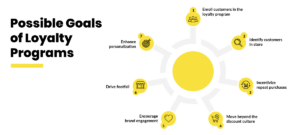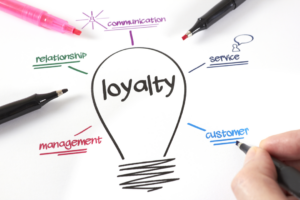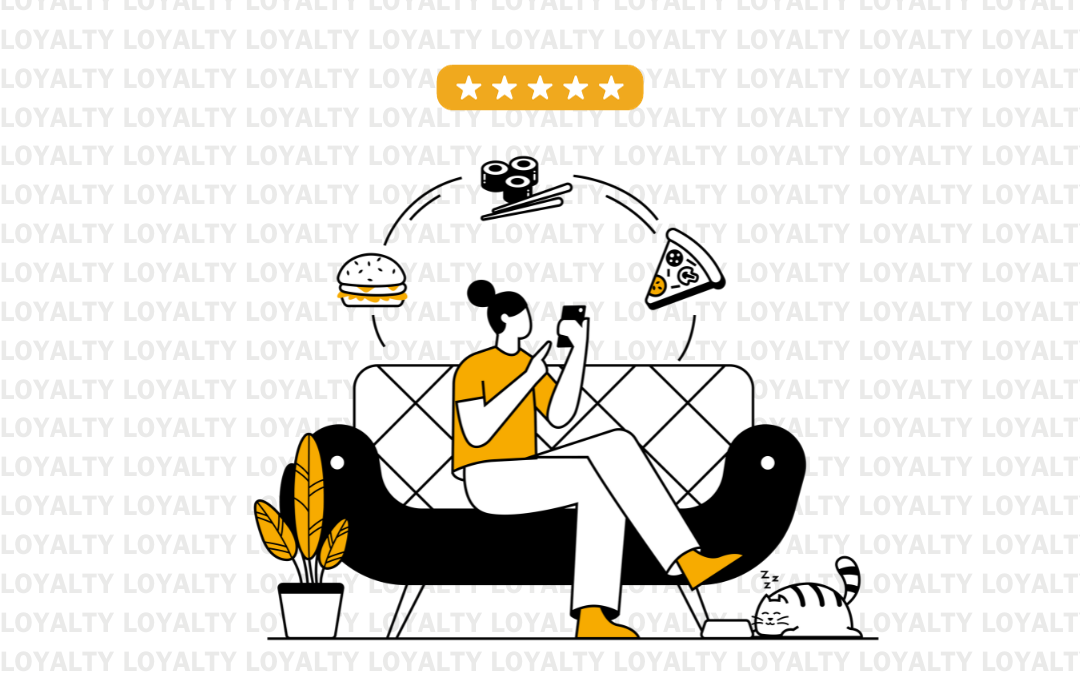In today’s fast-paced world, where convenience reigns supreme and consumer choices are abundant, establishing strong customer loyalty is more critical than ever for quick-service restaurants (QSRs). As competition heats up, QSR loyalty programs have emerged as powerful tools designed to not only attract new patrons but also to foster lasting relationships with existing customers. This blog post delves into the essence of these loyalty programs, exploring how they work, the psychology behind customer engagement, and their significant impact on your bottom line.
The basics of QSR loyalty programs

Quick Service Restaurants (QSRs) have increasingly turned to loyalty programs as a strategic way to foster customer engagement and build lasting relationships. QSR loyalty programs are structured initiatives designed to reward repeat customers for their patronage, creating a sense of community and belonging. The basic premise is simple: customers earn points or rewards for each purchase, which can subsequently be redeemed for discounts, free items, or exclusive offers.
These programs typically fall into several categories, each catering to different customer behaviors and preferences. Point-based systems allow customers to accumulate points with every transaction, encouraging them to return more frequently to reach their next reward. Tiered programs, on the other hand, offer varying levels of rewards based on customer spending, incentivizing higher spending through exclusive benefits for loyal members.
Mobile apps have become a transformative tool in the implementation of QSR loyalty programs, enabling customers to easily track their rewards, receive personalized offers, and place orders directly from their devices. These apps not only streamline the customer experience but also provide valuable data to businesses, allowing them to tailor their marketing strategies based on customer preferences and spending habits.
In essence, QSR loyalty programs are not merely about discounts or freebies; they are about creating a memorable dining experience that encourages customers to choose your restaurant over competitors. When executed effectively, these programs can significantly enhance customer satisfaction, increase frequency of visits, and ultimately, drive revenue growth for your business. Understanding the fundamentals of QSR loyalty programs is the first step in unlocking their full potential and reaping the benefits they can bring to your establishment.
The psychology behind customer loyalty

Customer loyalty is a fascinating interplay of emotional and psychological factors that drive consumers to repeatedly choose one brand over another. At the heart of this phenomenon lies the concept of trust; when customers feel a genuine connection with a brand, they are more likely to return. This trust is cultivated through consistent positive experiences, whether through exceptional customer service, high-quality products, or engaging brand interactions.
Moreover, loyalty is deeply influenced by the sense of belonging. Customers often seek communities that resonate with their values and lifestyles, and a well-crafted loyalty program can create this sense of affiliation. Offering exclusive rewards, personalized experiences, or even early access to new products, brands can foster a feeling of being part of something special, making customers feel valued and appreciated.
Psychologically, the principle of reciprocity also plays a significant role in loyalty. When customers receive rewards—be it discounts, freebies, or points—they feel an inherent urge to give back by making additional purchases or promoting the brand to others. This reciprocal relationship not only strengthens the bond between the customer and the brand but also encourages positive word-of-mouth, which can be invaluable for business growth.
Furthermore, the concept of loss aversion can enhance customer loyalty. People are more motivated to avoid losing benefits they have already gained than to pursue new gains. Loyalty programs capitalize on this by making customers feel that by not engaging with the brand, they risk losing their accumulated rewards or status. This psychological trigger ensures that customers keep coming back to avoid the perceived loss, reinforcing their loyalty over time.
Key features of successful loyalty programs
Successful loyalty programs in the Quick Service Restaurant (QSR) sector share several key features that not only attract customers but also encourage them to return time and again. First and foremost, simplicity is paramount. An effective loyalty program should be easy for customers to understand and participate in. Complicated rules or convoluted redemption processes can deter potential loyal customers, so a straightforward point system or digital punch card often works best.
Incorporating personalization is another vital feature. When customers feel recognized and valued, they are more likely to engage with your brand. Tailoring offers based on individual purchasing habits or sending personalized messages on special occasions, such as birthdays or anniversaries, adds a personal touch that can enhance customer relationships. Moreover, rewards should be enticing yet attainable. Programs that offer various tier levels can keep customers motivated; for example, after earning a certain number of points, they may unlock exclusive menu items or receive discounts on their favorite meals.
Integration with mobile technology also plays a crucial role in successful loyalty programs. Many customers prefer to manage their loyalty benefits via mobile apps, where they can easily track points, receive notifications about promotions, and place orders online. This convenience enhances user experience and fosters a deeper connection to your brand. Lastly, continuous engagement is essential. Regularly updating your rewards, launching promotional campaigns, or introducing limited-time offers ensures that customers stay excited and engaged with your loyalty program.
Measuring the impact of loyalty programs on business performance
Measuring the impact of loyalty programs on business performance is essential for understanding their actual value and effectiveness. To begin, businesses can look at key performance indicators (KPIs) such as customer retention rates, average transaction value, and overall sales growth. Comparing these metrics before and after the implementation of a loyalty program, organizations can gain valuable insights into consumer behavior and spending patterns.
One effective approach is to segment customers based on their engagement with the loyalty program. Analyzing the purchasing habits of loyal customers versus non-loyal customers can reveal the program’s impact on customer frequency and spending. For instance, if loyalty program members consistently spend more during their visits or visit more frequently than non-members, this indicates a strong correlation between the program and customer loyalty.
Another critical aspect to consider is customer feedback. Surveys and direct feedback can help gauge customer satisfaction with the loyalty program itself, highlighting areas for improvement or adjustment. Engaging with customers through these channels not only builds trust but also allows businesses to tailor their offerings to better meet customer needs.
Additionally, businesses should measure the return on investment (ROI) of loyalty programs by evaluating the costs associated with the program implementation against the additional revenue generated from loyal customers. This financial analysis can help determine whether the loyalty program is a worthwhile investment and can guide future marketing strategies. Ultimately, a robust measurement framework that combines quantitative metrics with qualitative feedback will provide a comprehensive view of how QSR loyalty programs affect business performance.
Best practices for implementing a QSR loyalty program
Implementing a successful Quick Service Restaurant (QSR) loyalty program requires careful planning and strategic execution.
Define the objectives for your program: What do you hope to achieve? Whether it’s increasing customer frequency, boosting average order value, or enhancing customer engagement, having specific goals will guide your program’s design and help measure its success.
Structure of your loyalty program: A tiered rewards system can be particularly effective, as it incentivizes customers to reach higher levels of loyalty with increasingly attractive perks. This approach not only motivates initial sign-ups but also encourages ongoing engagement as customers strive to unlock additional rewards. Ensure that the rewards themselves are desirable and relevant to your customer base—think discounts, exclusive menu items, or early access to promotions.
Integration of technology: Utilize mobile apps and digital platforms to streamline the customer experience. A user-friendly app can allow customers to easily track their rewards, place orders, and receive personalized offers, enhancing their overall experience.
Leverage data analytics: Gain insights into customer behavior and preferences. This valuable information can inform targeted marketing strategies and help refine your loyalty program over time.
Communication is key: Regularly engage with your customers through emails, push notifications, and in-store promotions to keep your loyalty program top of mind. Sharing updates on rewards and exclusive offers can reignite interest and encourage participation. Moreover, seeking feedback from customers can provide insights into how to improve the program and demonstrate that you value their opinions.
Employee training: Ensure that your staff is well-trained and enthusiastic about the loyalty program. Their engagement can significantly impact customer perception and participation. When employees are knowledgeable and excited about the benefits, they can effectively promote the program to customers, creating a positive feedback loop.
Challenges and solutions
Implementing a successful Quick Service Restaurant (QSR) loyalty program comes with its own set of challenges, but recognizing these hurdles is the first step toward effective solutions. One of the primary challenges is ensuring customer engagement. With so many competing brands vying for attention, it can be difficult to keep customers interested and actively participating in the program. To combat this, businesses can invest in personalized marketing strategies that tailor rewards and promotions to individual preferences and purchase history.
Another significant challenge is managing the technology that supports loyalty programs. Many QSRs struggle with outdated systems or lack the resources to implement sophisticated technology. To address this issue, partnering with a reliable loyalty program provider can streamline operations. These providers often bring expertise and tools that can enhance the customer experience, from mobile apps to point-of-sale integrations, making it easier for customers to earn and redeem rewards seamlessly.
Moreover, measuring the success of loyalty programs can be complex. QSRs may find it difficult to determine whether an increase in sales is directly attributed to their loyalty initiatives. Implementing robust tracking metrics and feedback mechanisms can provide invaluable insights. Regularly surveying customers about their experiences and perceptions of the program will help businesses adjust their strategies based on real-time feedback.
Lastly, ensuring that the rewards offered are genuinely valuable to customers is crucial. A common pitfall is creating a program that becomes stale or fails to excite. To rectify this, QSRs should periodically refresh their rewards and introduce limited-time offers or exclusive experiences that motivate repeat visits. Engaging customers through social media and soliciting their input on future rewards can also foster a sense of community and belonging, ultimately enhancing loyalty.
Future trends in QSR loyalty programs
As the quick-service restaurant (QSR) industry continues to evolve, so too do the loyalty programs that drive customer engagement and retention. The future of QSR loyalty programs is positioned to embrace technological advancements and changing consumer preferences, creating opportunities for restaurants to deepen their connection with patrons. One significant trend is the integration of artificial intelligence (AI) and machine learning, which will enable QSRs to analyze customer behaviors and preferences with unparalleled precision. This data-driven approach will allow for hyper-personalized rewards and offers, ensuring customers feel valued and understood.
Additionally, the rise of mobile apps is transforming how customers interact with loyalty programs. Expect to see an increase in user-friendly apps that not only streamline the ordering process but also incorporate gamification elements—think interactive challenges and rewards for frequent visits or social media shares. These features create a sense of community and excitement, encouraging patrons to engage more actively with the brand.
Sustainability is also emerging as a key factor in loyalty programs. Consumers are becoming more conscious of their environmental footprint, and QSRs that highlight eco-friendly practices—such as rewards for using reusable containers or discounts for plant-based menu choices—will resonate with this audience. Integrating sustainability into loyalty offerings not only appeals to customer values but also positions brands as responsible stewards of the environment.
Finally, collaboration and partnerships are likely to play a significant role in the future of QSR loyalty programs. Teaming up with other brands, whether within the food industry or beyond restaurants can offer unique cross-promotions that enhance the value of their loyalty programs. For example, a QSR might partner with a local gym to provide exclusive discounts for fitness enthusiasts, creating a win-win scenario that drives new customers while rewarding existing ones.
Conclusion
In conclusion, unlocking customer loyalty through effective Quick Service Restaurant (QSR) loyalty programs is not just a trend; it is a vital strategy for sustainable growth in a competitive market. In essence, understanding the intricacies of customer preferences and behaviors, businesses can design loyalty programs that resonate deeply with their target audience. The impact of a well-structured loyalty program extends beyond mere transactions; it fosters a sense of community and belonging among customers, encouraging them to choose your brand over competitors time and time again. As we’ve explored, successful QSR loyalty programs utilize personalization, engaging rewards, and seamless technology to enhance the customer experience. These elements not only drive repeated visits but also transform satisfied customers into advocates for your brand. Investing in these programs, you not only increase customer retention but also generate valuable insights into purchasing patterns, allowing you to refine your offerings continuously. Embracing the power of loyalty programs can lead to increased profitability and a stronger brand presence in the market. As you move forward, remember that the goal is to create lasting relationships with your customers, ensuring they feel valued and appreciated. In the fast-paced world of quick service dining, making your customers feel special can be the key to unlocking unparalleled loyalty and long-term success.

